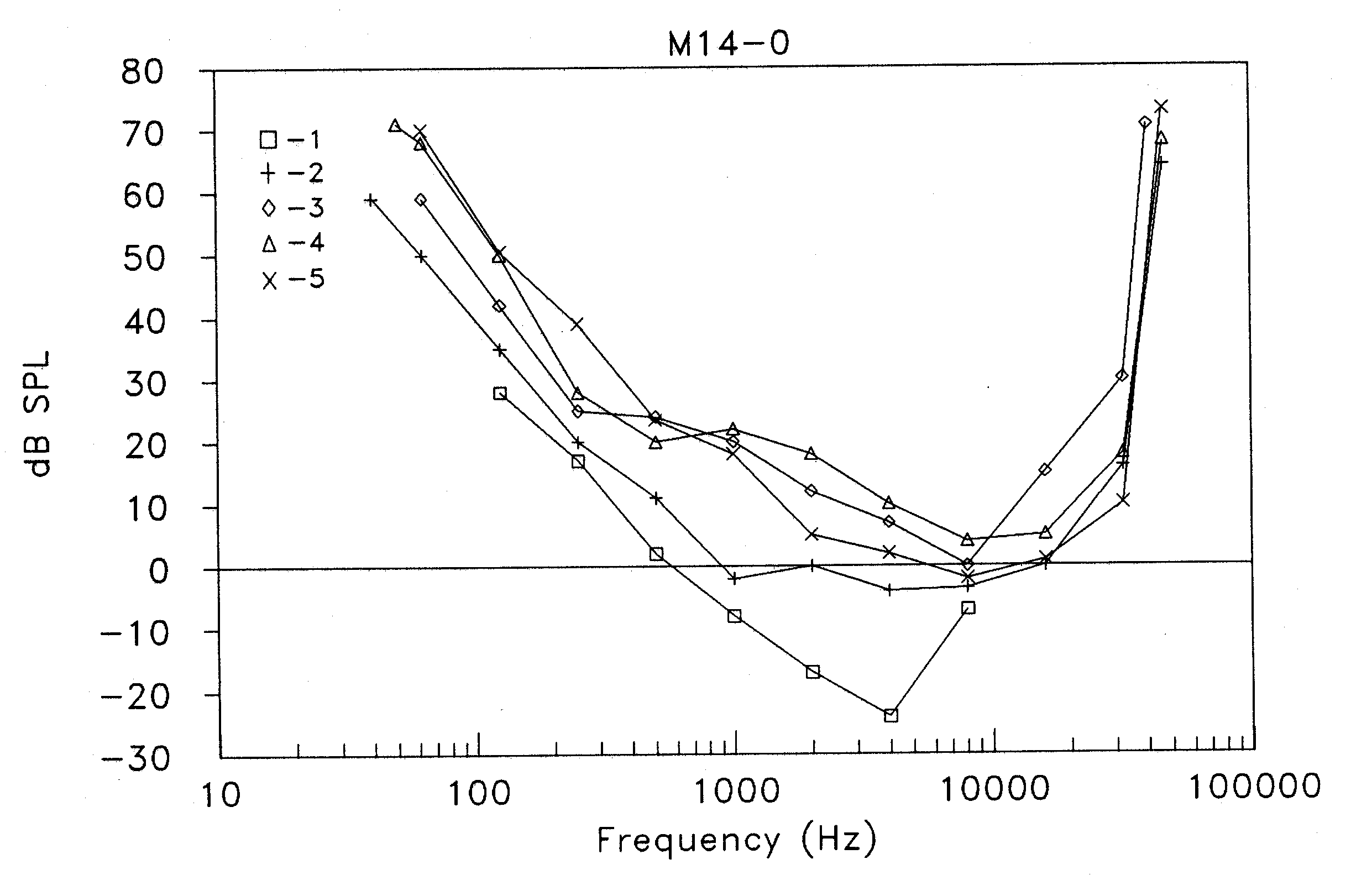How Well Do Dogs and Other Animals Hear?
Reporting the frequency range for hearing in dogs and other species is
not a straightforward task - the "how" of determining hearing
frequency ranges must first be explained. Testing in animals differs from
the method commonly used with humans of voluntarily reporting if a sound
is heard. When determining the frequency range in animals, an investigator
usually must first train the animal to respond to a presented sound stimulus
by selecting between two actions using rewards. Often this response is to
try to drink or eat from one of two dispensers when a sound is heard. The
sounds are randomly presented from one side or the other, and the subject
must select the right dispenser (on the same side as the stimulus) to get
the reward; otherwise no food or drink is dispensed. This is done with the
animal hungry or thirsty to motivate responding. Stimuli are different pure
tones at varied frequencies (units of Hertz [Hz] - or kilohertz [kHz]) and
at different loudness intensities (units of decibels [dB] - a logarithmic
measure). The investigator then plots the responses on an audiogram, a graph
of the softest intensity at which the subject was able to detect a specific.
The plot of responses is a bowl-shaped curve, steeper on the high frequency
end. A series of five typical audiograms for different dogs (Canis canis)
is shown in the figure below.
 (right click image to see it more clearly)
(right click image to see it more clearly)
These audiograms are from a book compiling thousands of published references
into a single difficult to find source (Fay, 1988). This particular audiogram
compiles data on the dog from two published sources: one reporting an average
from 11 dogs of unspecified breeds (Lipman & Grassi, 1942) and one reporting
results from single dogs of four breeds (Heffner, 1983). Frequency is displayed
on a logarithmic scale from 10 Hz to 100,000 Hz (100 kHz), while stimulus
intensity is displayed (in dB sound pressure level) from -30 to 80 dB. Curve
1 was from the Lipman study, while curve 2 (Poodle), curve 3 (Dachshund),
curve 4 (Saint Bernard) and curve 5 (Chihuahua) were from the Heffner study.
In general, dogs had slightly greater sound sensitivity (detected lower
intensity sounds) than humans, and cats had greater sensitivity than dogs,
indicated by how low on the y-axis points were located.
It can be seen that the lowest intensity detected differs between the
two studies; I place greater reliance on the Heffner study because it is
more current and because he is a widely published and respected audiology
researcher. It can also be seen that the greatest sensitivity (i.e. the
frequencies that can be detected at the lowest intensities) is in the frequency
range of 4-10 kHz. One dog (the Poodle) heard a tone at the low frequency
of 40 Hz, but an intensity of 59 dB was required for it to be detected;
most of the other dogs didn't respond until the stimulus frequency reached
62.5 Hz. Three dogs (the Poodle, Saint Bernard, and Chihuahua) heard a tone
at the highest frequency of 46 kHz, requiring intensities of 64-73 dB. On
the other hand, the Poodle heard a 4 kHz tone when it was -4 dB (since dB
are logarithmic units based on a ratio of the stimulus intensity compared
to a standard intensity, any stimulus smaller than the standard results
in a ratio less than one, and the logarithm of a number smaller than one
is a negative number; therefore a -4 dB stimulus intensity is a VERY soft
one!) and an 8 kHz tone when it was -3.5 dB. There was no systemic relation
seen among the four breeds between high frequency hearing sensitivity and
head size, body weight, or tympanic membrane area.
From the figure it can be seen that choosing the frequencies for reporting
the frequency range for dogs is hard - presumably lower frequencies could
have been detected if a loud enough stimulus was used, and likewise for
high frequencies. Nevertheless, the following table reports the approximate
hearing range for different species with an attempt to apply the same cut-off
criteria to all, using data from Fay (1988) and Warfield (1973). Since different
experimental methods were used in these different studies, too much value
should not be placed on comparing species.
| Species |
Approximate Range (Hz) |
| human |
64-23,000 |
| dog |
67-45,000 |
| cat |
45-64,000 |
| cow |
23-35,000 |
| horse |
55-33,500 |
| sheep |
100-30,000 |
| rabbit |
360-42,000 |
| rat |
200-76,000 |
| mouse |
1,000-91,000 |
| gerbil |
100-60,000 |
| guinea pig |
54-50,000 |
| hedgehog |
250-45,000 |
| raccoon |
100-40,000 |
| ferret |
16-44,000 |
| opossum |
500-64,000 |
| chinchilla |
90-22,800 |
| bat |
2,000-110,000 |
| beluga whale |
1,000-123,000 |
| elephant |
16-12,000 |
| porpoise |
75-150,000 |
| goldfish |
20-3,000 |
| catfish |
50-4,000 |
| tuna |
50-1,100 |
| bullfrog |
100-3,000 |
| tree frog |
50-4,000 |
| canary |
250-8,000 |
| parakeet |
200-8,500 |
| cockatiel |
250-8,000 |
| owl |
200-12,000 |
| chicken |
125-2,000 |
References:
Russian translation: https://animalso.com/ru/dogs-and-animals-hearing-range/ courtesy of Animalso.
Return to Deafness
in Dogs and Cats
April 10, 2017